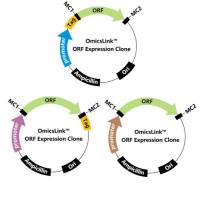Minimal residual disease (MRD) diagnostics is of high clinical relevance in patients with indolent B-cell Non-Hodgkin lymphomas (B-NHL) and serves as a surrogate parameter to evaluate treatment effectiveness and long-term prognosis. MRD diagnostics performed by real-time quantitative PCR (RQ-PCR) is the gold-standard and currently the most sensitive and the most broadly applied method in follicular lymphoma (FL) and mantle cell lymphoma (MCL). RQ-PCR analysis of the junctional regions of the rearranged immunoglobulin heavy-chain gene (IgH) serves as the most broadly applicable MRD target in B-NHL (∼80%). Chromosomal translocations as t(14;18) translocation in FL and t(11;14) translocation in MCL can be used in selected lymphoma subtypes. In patients with B-cell chronic lymphocytic leukemia, both flow-cytometry as well as RQ-PCR are equally suitable for MRD assessment as long as a sensitivity of ≤10−4 shall be achieved.
MRD diagnostics targeting the IgH gene is complex and requires extensive knowledge and experience because the junctional regions of each lymphoma have to be identified before the patient-specific RQ-PCR assays can be designed for MRD monitoring. Furthermore, somatic mutations of the IgH region occurring during B-cell development of germinal center and post-germinal center lymphomas may hamper appropriate primer binding leading to false negative results. The translocations mentioned above have the advantage that consensus forward primers and probes, both placed in the breakpoint regions of chromosome 18 in FL and chromosome 11 in MCL, can be used in combination with a reverse primer placed in the IgH joining region of chromosome 14. RQ-PCR-based methods can reach a good sensitivity (≤10−4 ). This chapter provides all relevant background information and technical aspects for the complete laboratory process from detection of the clonal IgH gene rearrangement and the chromosomal translocations at diagnosis to the actual MRD measurements in clinical follow-up samples of B-NHL. However, it should be noted that MRD diagnostics for clinical treatment protocols has to be accompanied by regular international quality control rounds to ensure the reproducibility and reliability of the MRD results.






